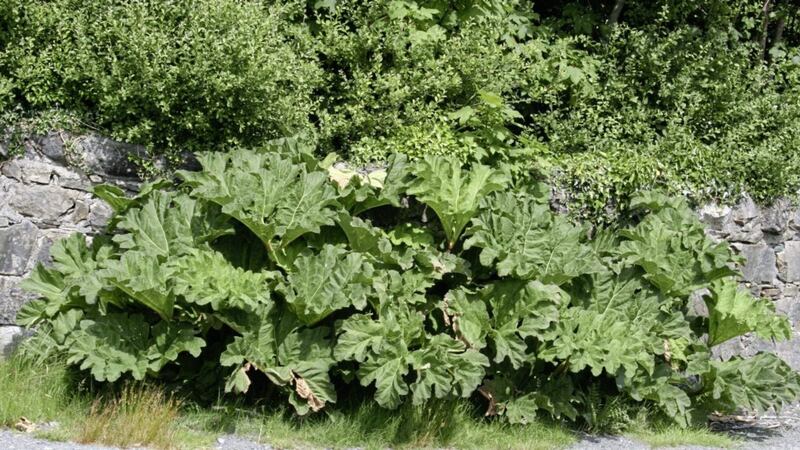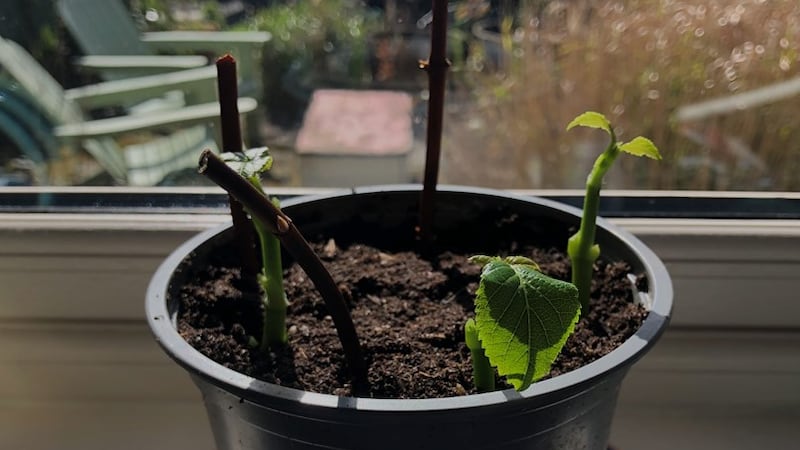IT CAN hardly be regarded as the actions of a full-blooded eco warrior but, in a roundabout way, I have dealt a blow for Irish biodiversity.
Stopping one of the main threats to this island's native flora dead in its tracks wasn't intentional, however – and a part of me still regrets it.
Around a decade ago, with the desire for a pond and accompanying bog garden came the ambition to have arguably the greatest waterside plant of them all – Gunnera tinctoria.
This herbaceous monster isn't suited to smaller gardens, as there'd be no room for anything else, with huge dicot leaves that shade all around like Jurassic awnings.
Gunneras – AKA giant rhubarb – are common across the southern hemisphere but G. tinctoria, the largest of the species, comes from Brazil.
It is one of those architectural plants, like the pernicious giant hogweed, whose scale astounded Europeans and made it the must-have ornamental for 19th century horticultural fashionistas and collectors.
Its size means gunnera requires space. It's a difficult plant to contain – put bluntly, it's a thug. This is half its appeal though – a thicket of Gunnera at the water's edge is classic Romantic parkland garden.
Its attributes are employed to full effect in isolation at the Temple Water, Castle Ward in Co Down, highlighting how the bigger the thicket, the stronger the effect.
Similar to G. tinctoria, if slightly smaller, is G.manicata, which hails from Chile.
Moisture is key to gunnera's survival and it's best suited to a boggy part of the garden, where it will mop up excess water. If you don't have anywhere naturally damp then you're going to have to mulch it regularly and keep it moist.
This was my undoing. The bog garden that housed my gunnera – a bath-size hole lined with plastic then refilled – had become neglected and more like a dry garden. Its chances of survival were slim.
If I'm honest, the gunnera was never going to fulfil its true potential, flanked and overshadowed by semi-mature beech, yew and cherry, who would've only cramped its exotic style.
This is a plant that needs full sun to stay upright and in prime condition.
But in many ways its demise was no bad thing, as there's a drawback with Gunnera tinctoria, which you'll perhaps appreciate if you've spent any time on Co Mayo's Atlantic coast, especially on Achill Island.
Having been introduced to the West by the pioneering gardeners who developed the likes of Kylemore Abbey (Co Galway) and Ilnacullin (Co Cork), this triffid-like plant has escaped and naturalised along swathes of Irish coastline.
Its 'success' on bogland where wild flowers once thrived is down to the plant's ability to exploit nutrient poor soil through a symbiotic relationship with the Nostoc punctiforme bacteria inside the gunnera rhizome (root).
It's a a process similar to that which enables legumes like beans and peas to fix otherwise scarce nitrogen in the atmosphere and absorb it through the roots.
That trademark 'Jurassic awning' foliage is also adept at keeping the light away from any competitors. G. tinctoria is a super-sized survivalist that was here a long time before man and will likely be here a long time after we're gone.
A recent report on the consequences of climate change for gardens and gardening noted how the "geographic range in which Gunnera might be successful is likely to shift to the north and east", with attendant negative consequences for the flora and the landscape.
Notably, it's reckoned that G. manicata – the Chilean one – doesn't share its Brazilian cousin's invasive nature. So perhaps this should be your preferred Gunnera, if you must have one at all?








